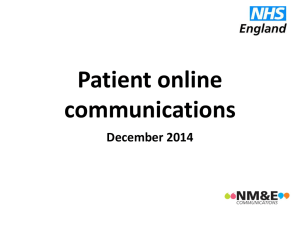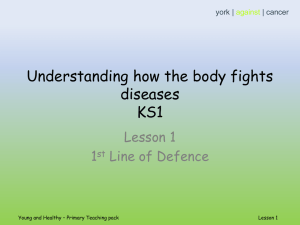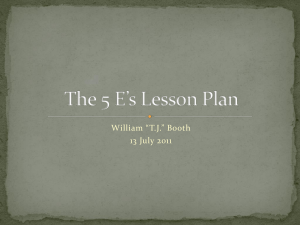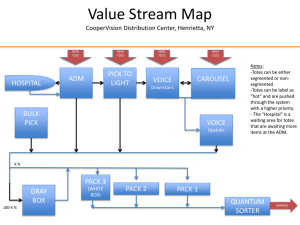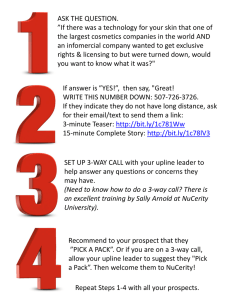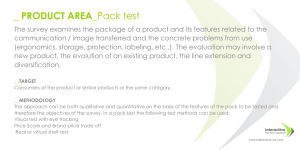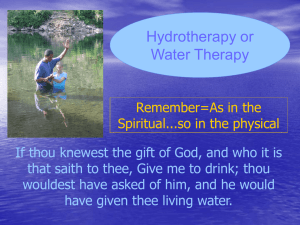Heat Transfer Activity: Hot & Cold Packs, CaCl2
advertisement
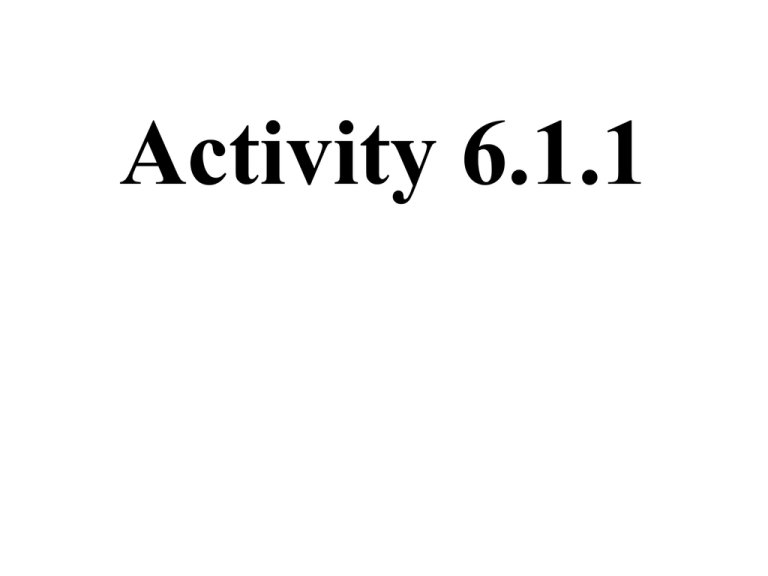
Activity 6.1.1 Page 2 1) Hand Warmer: In your groups activate the metal disk inside the liquid solution. What questions do you have about the hand warmer? Page 2 2) Examine the opened cold pack that your teacher will provide. Activate one cold pack per class and pass it around the room. What do you notice? What questions do you have about the cold pack? Page 2 3) Place a small amount of calcium chloride solid into 15-20 mL of cold water and stir. Feel the beaker and remember your observations. After discussing your questions as a class, answer the following based on your experience . . . Page 3 4) Which experiences (hot pack, cold pack, CaCl2 beaker) made your hands feel warmer? Hot pack, then CaCl2 beaker Page 3 5) Which way is the heat energy moving? Imagine you are holding the cold pack, hot pack, or solution. Draw an arrow indicating whether heat moves from your hand to the object or from the object to your hand. Heat Pack CaCl2 beaker Cold Pack Hand Hand Hand Page 2 6) In which of the 3 scenarios did the heat travel from the system to your hand? Hot pack, & the CaCl2 7) In which of the 3 scenarios did the heat travel from your hand to the system? Cold pack Page 2 8) If you leave the hot pack over night, will it still be hot tomorrow? Why or why not? No, it will have given off heat until it equalized with the room. Page 3 Ice Cube Melting on a Counter Top: 1. Draw arrows showing which direction heat is being transferred, into, or out of, the ice cube. 2. Where exactly is the heat coming from? The surroundings 3. How are the molecules of H2O in the puddle of water different from the molecules of water still in the solid ice cube? They are moving faster 4. When the ice cube melts, is it releasing heat or taking heat from the environment? Taking heat from the environment Page 3 Water Freezing in an Ice Cube Tray: 5. Draw arrows showing which direction heat is being transferred when the ice cube tray is placed in the freezer. Is heat being transferred into or out of the water as it freezes into ice? 6. Is heat being transferred into or out of the air directly around the ice cube tray? Heat is transferred out. 7. In order to cool things in a refrigerator, heat must be transferred away from the food. Where do you think this heat ends up going? Outside of the fridge. 8. When water freezes, is it releasing heat or taking heat from the environment? Releasing heat. Page 4 Making an NH4Cl Solution: 9. The temperature decreases when you dissolve solid NH4Cl in water. What would you feel if you held this beaker? It would feel cold. (Your heat leaves you). 10. Do you think this process would be used to create a cold pack to reduce swelling or a hot pack to increase circulation? Explain. Cold pack. 11. In the process of dissolving solid NH4Cl in water, describe the direction in which heat is moving. Endothermic, heat is transferred from the environment to the system. 12. Do you think the thermometer is part of the system or surroundings? Surroundings. Page 4 13. When the temperature of the thermometer goes down, do you think heat is going into the thermometer or out of the thermometer? Out of the thermometer. 14. If the thermometer is put in a reaction and ∆T is positive, did heat go into the thermometer or out of the thermometer? Into the thermometer. Making Sense What does it mean to say that something is hot? It will transfer energy TO you. What does cold mean? It will transfer energy AWAY from you. Can you transfer cold? Explain. No, heat can only move from warmer to cooler objects.

